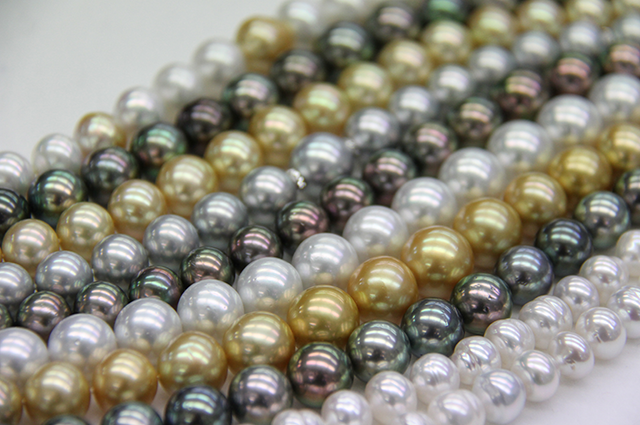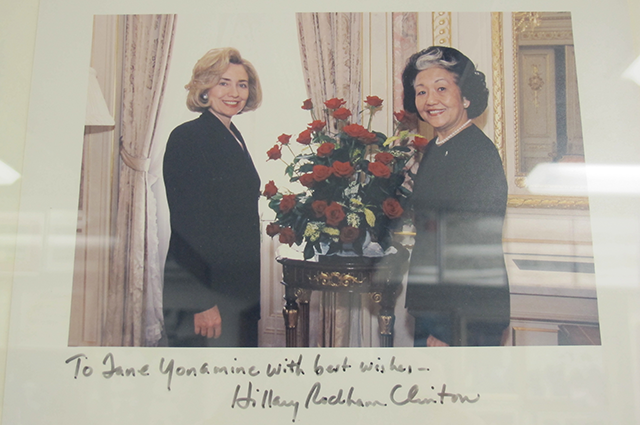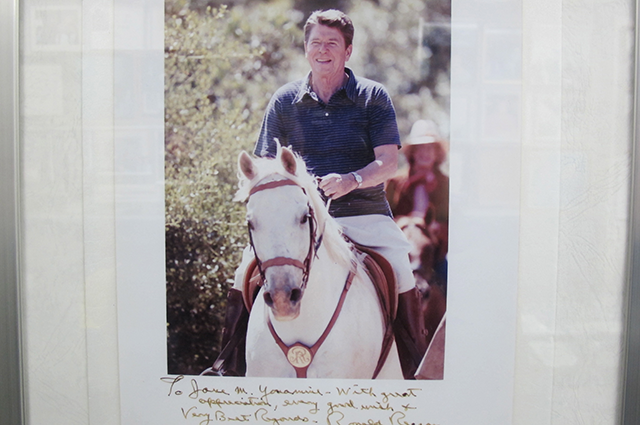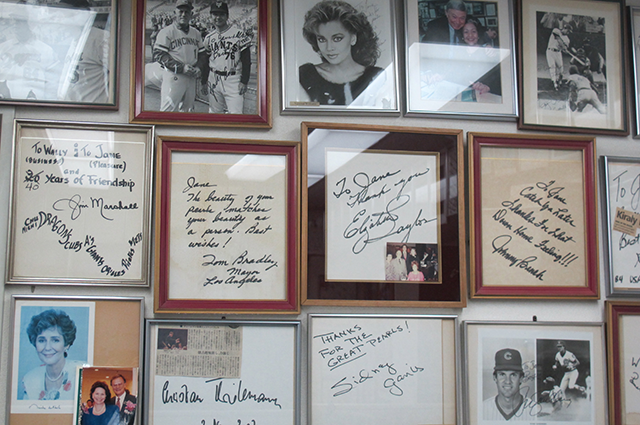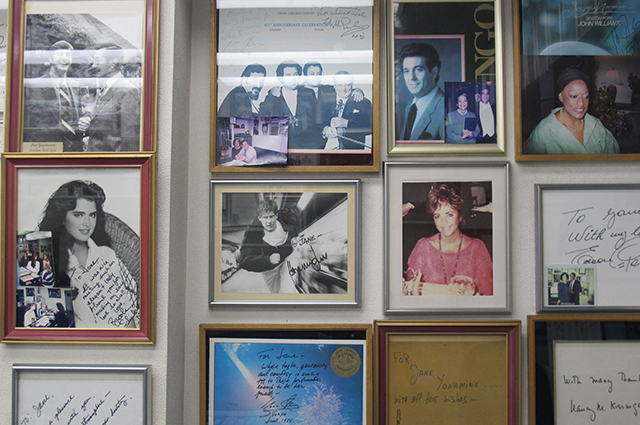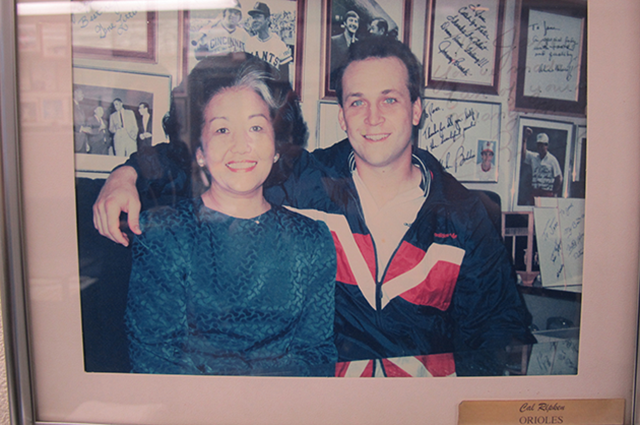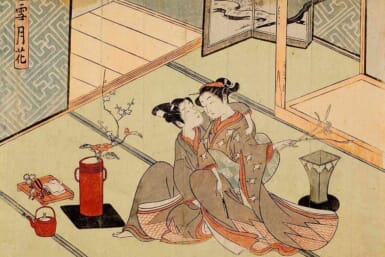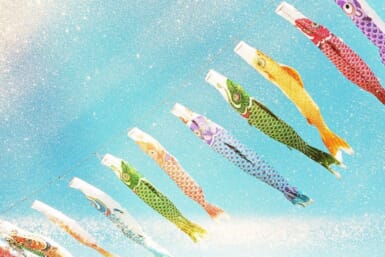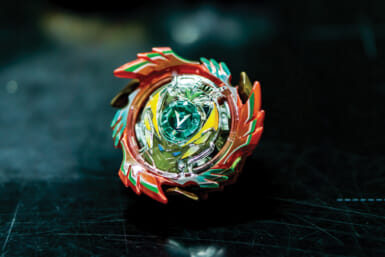Dating as far back as the 1st century in Japan, when ama free-divers hunted for pearl producing oysters in the seas of Okinawa, the gemstone has been an iconic treasure that represented wealth, beauty, and royalty.
By Sami Kawahara
If you fast forward 2,000 years and open up any high fashion collection lookbook, you will be sure to find a pearl-inspired piece in the mix. Alexander McQueen’s Fall 2013 pearl-lined gloves and Chanel’s Spring 2013 $32,000 bracelet, to name a few, have filled the pages of luxury fashion magazines. It is a trend that never dies.
The classic gemstone is also tailor made for girls and women of all ages, making the pearl a safe, foolproof gift choice. How exactly do you pick the perfect pearl for yourself or someone on your Valentine’s gift to-do list? We consulted with General Manager Keiko Umehara and President Lynda Yonamine of Yonamine Pearls, a 50-year-old pearl shop in the heart of Roppongi, to find how this gem has managed to stay relevant through the times and what details to look for when choosing the perfect pearl.
An element that makes the pearl timeless is that it can be worn from the beginning of the workday to the end of a dinner party. It is versatile and an easy choice for women to accessorize with when in need of an effortless transition from day to night. Pearls are also a very personal accessory, as the pearl’s luster reflects a person’s skin tone or clothing, adding originality to an otherwise common accessory.
Pearls of Wisdom
Real or Fake Japanese Pearls? 5 ways to tell:
1. The largest Japanese cultured pearl you can find is 11.5 mm, but they rarely go larger than 10 mm since it is grown in a smaller shell. Anything larger is not real.
2. Japanese pearls come in natural colors of white with hues of pink and grey. They can also be tinted in green hues for example, but if dark black they are treated with cobalt. Treated color should not fade, but tinted color can.
3. Rub them together. Fake pearls are very smooth, real pearls are gritty. You can also bite the pearl (lightly!) to feel the graininess.
4. Tap the pearls gently. Fake pearls are dull sounding, real pearls sound clear and glassy.
5. Feel them. Fake pearls are warm, real pearls are very cold.
Luster, size, and shape typically determine the quality and price of a pearl. To produce a Japanese-cultured or Akoya pearl, an irritant is placed inside the tissue of an oyster shell to start the process, which takes approximately two years to complete. The pearl grows and develops as the creature protects itself from the irritation by coating the object with layers of nacre. Many factors—for example how long the pearl grows in the shell, or if an oyster generates one or several pearls at a time—determine the quality of the gem.
Since there is no standardized, international grading system for pearls like there is for diamonds, it is essential to know the basics so you can go anywhere in the world with confidence to find that perfect pearl. Luster, or the shine of the pearl, is the most important trait to look for. If you are on a budget, “you can give on size and shape, but never luster,” Umehara notes. To look at luster, Yonamine suggests examining the pearls against a white cloth or piece of paper instead of a dark cloth, where any pearl will look good. Imperfections and uneven shapes are all right as long as nothing is chipping away. Since pearls are 100% organic, body oil, perfume, and perspiration can eat away at a pearl, ruining the luster later on.
Whether it’s a young girl receiving her first gemstone, a teenager with eclectic style, or an older woman who enjoys a classic look, pearls fit the mold for all.
Yonamine Pearl Shop
Department stores filled with dedicated jewelry sections and Mikimoto stores lining the streets of Ginza make for easy access to pearls in Tokyo. But with the pearl being such a personal selection, the extra time spent becoming educated about the gem while being able to customize a design is an invaluable asset.
Yonamine Pearls in Roppongi has been doing this since 1964, when Jane and Wally Yonamine, a Japanese American couple from Hawaii, opened up the pearl shop. The long, successful history of Wally in his professional sports days, and the elegance, charm, and dedication of Jane are what give this shop every bit of its character.
As the first Asian-American to play for the NFL as a running back for the San Francisco 49ers, and the first foreigner to join the Nippon Professional Baseball as an outfielder for the Yomiuri Giants, Wally Yonamine was a pioneer in two sports. Wally overcame the initial resentment of his foreign status from Japanese fans and players in 1951, and went on to have one of the most successful careers in history as both a player and manager until 1988. In 1994, he became the first American to be inducted into the Japanese Baseball Hall of Fame.
During his time as a professional athlete, Jane opened up the pearl shop a few steps away from Roppongi Crossing. The pearl shop attracted many of the athletes and wives from the baseball league, which led to many celebrities and even royalty to become loyal customers of the business. Celebrities like Brooke Shields, Elizabeth Taylor, Harrison Ford, Jodi Foster, Cal Ripken, Don Henley, and other people from all walks of life have been a part of the shop’s long history. And it can all be seen in the framed photos and handwritten notes to Wally and Jane spread throughout the walls of the shop.
Entering the 5th floor shop in Roppongi feels like stepping into your family’s living room: you are greeted to sit on a sofa with a cup of tea in hand as you get ready to browse the pearl selection. Yonamine Pearl Shop’s collection comes from local suppliers who bring in the highest quality South Sea pearls, Japanese cultured pearls and fresh water pearls. A large assortment of necklaces, earrings, brooches, and bracelets are out on display, but the staff of six are able to custom design a piece based on your budget, skin tone, and overall preference in length, size, and shape. The shop has a rich history, and there are symbolic touches everywhere, including the Yonamine logo, which was based on Wally’s handwriting.
With the passing of Wally in 2011 and Jane’s recent return to Hawaii, the daughter-in-law of the couple, Lynda Yonamine, has taken over the business as President.
And now, as long-time general manager, Keiko Umehara, Lynda, and the rest of the well-trained staff assume their positions, the future looks brighter than ever as they embark on their next 50 years of business.
The Pearl Shop’s Photo Highlights:
Hillary Clinton
Ronald Reagan
Elizabeth Taylor
Brooke Shields & Harrison Ford
Cal Ripken
…and many, many more!

